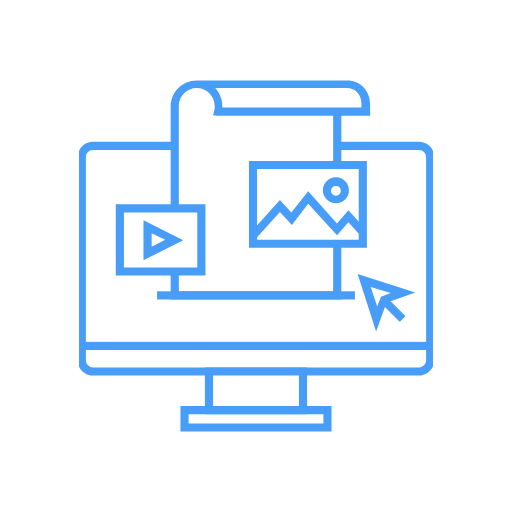eScience Labs: Anatomy & Physiology Labs
The eScience Labs lab kit, created specifically for college-level Anatomy & Physiology, includes models, specimens, safety equipment, and more. This kit, combined with Odigia’s Teaching and Learning Tools, is everything you need to engage, collaborate, track, and assess your students.
This course includes:

Digital Learning and Teaching Tools

Quality Lab Kits

Customizable Assessments
The Benefits of eScience Labs + Odigia

Make It Yours
Customize the lab kit and assessments to fit the needs of your course and match your desired learning outcomes.

No-Hassle Delivery
Kits are delivered directly to your students at the time and price you need, giving your students a successful lab experience wherever they are.

Prepare Students
Go beyond the traditional with digital learning and teaching tools that help prepare students for success in today’s workplace.

Boost Engagement
Create an immersive, engaging, and affordable distance learning experience. Can connect to your LMS or run independently.
eScience Labs: Anatomy & Physiology Labs
Lab Kits Available in Odigia:
Anatomical Orientations
- Experiment 1: Anatomical Terms
- Experiment 2: Anatomical Planes
- Experiment 3: Body Cavities
The Chemistry of Life
- Experiment 1: Testing for Biomolecules
Cell Structure and Function
- Experiment 1: Cell Structure and Function
- Experiment 2: Exploring Cell Size
Tissues and Skin
- Experiment 1: Microscopic Slide Examination of Tissue
- Experiment 2: Microscopic Slide Examination Of Skin
- Experiment 3: Sweat Gland Distribution
- Experiment 4: Skin Receptors
- Experiment 5: Introduction to the Fetal Pig
The Skeletal System
- Experiment 1: Classification of Bones
- Experiment 2: Digital Slide Image Examination – Bone
- Experiment 3: Owl Pellet Dissection
- Experiment 4: Effects of Acid on Bone
- Experiment 5: Physical Model – The Axial Skeleton
- Experiment 6: Virtual Model – Axial Skeleton
- Experiment 7: Physical Skeleton – The Appendicular Skeleton
- Experiment 8: Virtual Model – The Appendicular Skeleton
- Experiment 9: Articulations
- Experiment 10: Skeleton System of the Fetal Pig
The Muscular System
- Experiment 1: Tendons and Ligaments
- Experiment 2: The Neuromuscular Junction
- Experiment 3: Muscle Fatigue
- Experiment 4: Gross Anatomy of the Muscular System
- Experiment 5: ATP and Muscle Fatigue
- Experiment 6: Virtual Model – The Muscular System (Upper Body)
- Experiment 7: Virtual Model – The Muscular System (Lower Body)
- Experiment 8: Fetal Pig Dissection – Muscular System
The Nervous System
- Experiment 1: Microscopic Anatomy of the Nervous System
- Experiment 2: Virtual Model – The Nervous System
- Experiment 3: Cow Eye Dissection
- Experiment 4: Brain Mapping
- Experiment 5: Sheep Brain Dissection
- Experiment 6: Reflexes – Part I
- Experiment 7: Reflexes – Part II
- Experiment 8: Fetal Pig Dissection – The Nervous System
The Endocrine System
- Experiment 1: Microscopic Anatomy of the Endocrine System
- Experiment 2: Stress Response
- Experiment 3: Fetal Pig Dissection – Endocrine System
The Cardiovascular System
- Experiment 1: Heart Valves and Pumps
- Experiment 2: Effect of Chelation Therapy on Arterial Plaque Levels
- Experiment 3: Microscopic Anatomy of Blood
- Experiment 4: Blood Typing Experiment
- Experiment 5: Virtual Model – The Heart
- Experiment 6: Sheep Heart Dissection
The Circulatory System
- Experiment 1: Microscopic Examination of Blood Vessels
- Experiment 2: Virtual Model – The Circulatory System
- Experiment 3: Blood Pressure
- Experiment 4: Fetal Pig Dissection – The Circulatory System
The Lymphatic System
- Experiment 1: Examining the Microscopic Anatomy of the Lymphatic System
- Experiment 2: Virtual Model – The Lymphatic System
- Experiment 3: Fetal Pig Dissection – The Lymphatic System
The Respiratory System
- Experiment 1: Microscopic Anatomy of the Respiratory System
- Experiment 2: Virtual Model – The Respiratory System
- Experiment 3: Understanding Lung Mechanics
- Experiment 4: Peak Flow Meter
- Experiment 5: Fetal Pig Dissection – The Respiratory System
The Urinary System
- Experiment 1: Kidney Filtration
- Experiment 2: Urinalysis
- Experiment 3: Virtual Model – The Urinary System
- Experiment 4: Fetal Pig Dissection – The Urinary System
Electrolytes, Water, Acids & Bases
- Experiment 1: Breathing and Acid-Base Balance
- Experiment 2: Urine pH
The Digestive System
- Experiment 1: Microscopic Anatomy of the Digestive System
- Experiment 2: Virtual Model – The Digestive System
- Experiment 3: Swallowing
- Experiment 4: Chemical Digestion of Food – The Role of Enzymes
- Experiment 5: Fetal Pig Dissection – The Digestive System
Nutrition
- Experiment 1: Tracking Your Nutrition
The Reproductive System
- Experiment 1: Microscopic Anatomy of the Reproductive System
- Experiment 2: Virtual Model – The Reproductive System
- Experiment 3: Fetal Pig Dissection – The Reproductive System
These labs have been combined with our comprehensive Anatomy & Physiology content to create a complete digital learning experience for your students.

Science Interactive Group provides comprehensive, standard-aligned content and educational products, services, and software. Our vast assortment of innovative STEM-oriented products is designed to provide instructors with interactive, real-world applications that engage students and enhance outcomes.

Odigia provides digital learning and teaching tools that enhance the way students and instructors access, modify, and engage with content, collaborate with each other during the course, track progress and understanding of content, and ultimately apply knowledge.
Interested in learning more about eScience Labs + Odigia?

